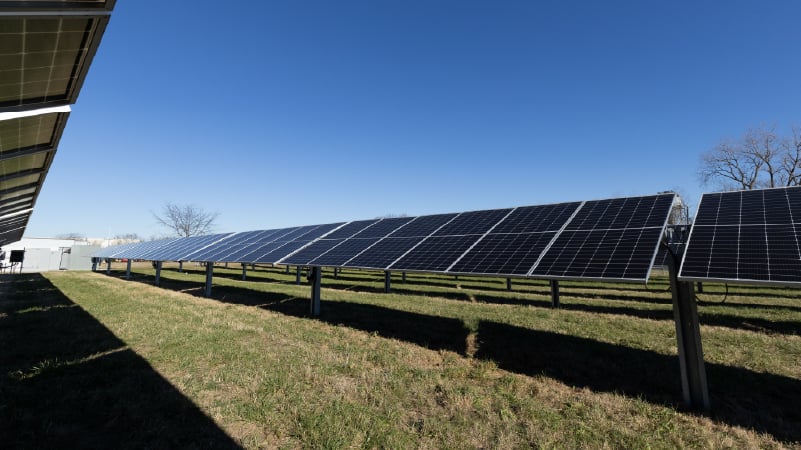The inevitable growth of high-performance computing (HPC) in areas such as AI, driven by data centers, has raised the stakes and the power required to energize a new era of technology. In the interconnected industry of data centers, some of the most crucial efforts today are thoses taken toward energy independence.
The paper "Data Centers Pivoting to Grid Independence with Dynamic Power" delves into the current challenges that data center operators face with relying on erratic grid power, fluctuating fuel costs, and carbon emissions. This article also discusses the concept of bring-your-own-power (BYOP) and how it can help data centers meet their current and future needs while reducing their respective scope 1, 2, and 3 emissions to achieve sustainability objectives.
Surpassing the limits of the grid
Grids and data centers were designed for consistent and stable power demands. However, these workloads have become more unpredictable and power demand has become more volatile over time, riding the peaks and troughs of varied processor-intensive functions and external factors. This new normal of power consumption patterns challenges the capacities of electrical grids, leading to systemic inefficiencies, operational chaos, and a heightened risk of downtime.
The operational costs tied to the increasing demand are only half the battle. Another concern is the grid's diminishing reliability, which translates to a failure to meet the uptime needed in today's data-driven economy. Moreover, some governments are starting to restrict the permitting of traditional diesel generators for the carbon emissions and high noise/pollutant levels they generate during outages, especially on genset starts.
BYOP: Always-on integrated solutions
Enter bring your own power (BYOP), a multifaceted solution that embraces the use and integration of battery energy storage systems (BESS), renewable energy sources like solar panels and wind turbines, and fuel cells. These technologies, when integrated into a microgrid, can revolutionize a data center's energy strategy. They offer a localized, sustainable, and reliable power solution that isn't just about being environmentally responsible, but operationally smart.
Managed hybrid microgrids redefine the rules of engagement in power management. By integrating distributed energy resources (DERs) and BESS, these microgrids provide a layer of protection against grid instability. They operate independently or in tandem with the larger grid, ensuring an 'always-on' power source that is as reliable as it is sustainable.
An 'always-on' microgrid hardens the infrastructure against external power issues, offering operators control in managing the source and the load. Data centers can reduce their reliance on grid power during peak hours, opting for reserves from their BESS and UPS systems instead. This not only enhances the data center's operational efficiency but also eases the burden on the grid, contributing to a more balanced energy ecosystem.
Energy independence systems integration
Environmental responsibility is not just a buzzword — it's a bottom-line discussion. Considering the role it plays in managing, storing, and distributing stored energy from multiple sources, the advantages of BESS go beyond just cost-savings, making them a promising technology for data centers looking to reduce their environmental impact. By integrating renewable energy sources with BESS, data centers can shift away from the drain of the grid. Fuel cells, particularly polymer electrolyte membrane (PEM) and solid oxide fuel cells (SOFC), offer a lasting and promising solution for clean, reliable energy. In tandem with BESS, they can form the backbone of a data center's energy architecture as a primary and backup source of electricity.
The need for data centers to chart their path to energy independence is not merely a contingency plan against a faltering grid. It is a strategic business, environmental, and fiscal imperative that aligns with their respective commercial and customer service goals. The availability and continuity of power, or the lack thereof, can immediately impact customer satisfaction or dissatisfaction, making the quest for energy independence a customer-centric priority.
Conclusion
The integration of energy independent power solutions is a game-changing strategy for ensuring the future of data centers. The surge in digitalization cannot be hamstrung by a grid that is increasingly challenged by growing internal and external demands. BYOP embraces independence, reliability, and above all, sustainability as it changes the direction and approach to business resilience.
BYOP microgrids, equipped with a suite of clean, reliable energy technologies, is no longer a concept but a reality. This shift from a 'plug and play' to a 'generate and thrive' mindset is crucial for data centers aiming to lead in the digital future.






